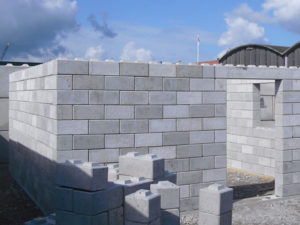Building Homes From Plastic Bricks! Waste Product Homes Are The Future.
What if things we throw away could be put right in a block maker, and turned into bricks? That’s beginning to happen in multiple ways! From plastic bricks made of recycle waste to machines that crush boulders and rocks into liquid cement, and make bricks, there are great things on the horizon!
These blocks can be made in the same size as standard concrete blocks, though don’t have the same weight-bearing capabilities. The blocks do have good acoustic and thermal insulation properties, which ByFusion says makes them ideal for use in road projects or fill-in building frames.
Read more: http://www.offgridquest.com/construction-methods/Plastic-b
Dusan Bozanic ~ Amazing “Before and After” Photos of 15 Iconic Cities
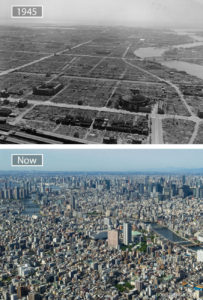 It’s quite amazing how cities can change over time. It doesn’t even have to be that much time, you can literally leave your city for only a few years and when you come back, you’ll be baffled with the changes that occurred in your absence. Now imagine how some cities can change after ten, twenty or even one hundred years. The most drastic example is probably the beautiful city of Dubai, but we also prepared many “before and after” photographs so you could see how some of the biggest cities on the planet have changed throughout history.
It’s quite amazing how cities can change over time. It doesn’t even have to be that much time, you can literally leave your city for only a few years and when you come back, you’ll be baffled with the changes that occurred in your absence. Now imagine how some cities can change after ten, twenty or even one hundred years. The most drastic example is probably the beautiful city of Dubai, but we also prepared many “before and after” photographs so you could see how some of the biggest cities on the planet have changed throughout history.
Enjoy: http://www.sortra.com/breathtaking-transformations-of-iconic-cities/
Kanishk Tharoor ~ The Rise And Fall Of Great World Cities: 5,700 Years Of Urbanisation – Mapped
Urbanisation is one of the defining processes of modern times, with more than half of the world’s population now living in cities, and new mega-metropolises mushrooming in Asia, Latin America and Africa. But a comprehensive, digitised database of city populations through world history has been lacking, with the United Nations’ dataset only extending as far back as 1950.
That was until recent research, published in the journal Scientific Data, transcribed and geocoded nearly 6,000 years of data (from 3700BC to AD2000). The report produced a gargantuan resource for scholars hoping to better understand how and why cities rise and fall – and allowed blogger Max Galka to produce a striking visualisation on his site Metrocosm.
Read more: https://www.theguardian.com/rise-fall
Smart City Makeover For Slums In Bhubaneswar Township Area
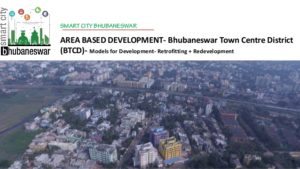 BHUBANESHWAR: The slum pockets falling under Bhubaneswar Town Centre District (BTCD), will wear a new look, according to the concept of Smart City Mission.
BHUBANESHWAR: The slum pockets falling under Bhubaneswar Town Centre District (BTCD), will wear a new look, according to the concept of Smart City Mission.
The BTCD is spread over 985 acres and there are 26 slums in the zone. The BTCD will be a model town of the city to be developed under the mission. The Bhubaneswar Municipal Corporation (BMC) has started validation (enumeration) camps to identify the genuine slum dwellers so that they are provided with concrete buildings.
Read more: http://realty.economictimes.indiatimes.com/hubaneswar-township-area
Moladi ~ Conventional Building Methods Not Suited To African Conditions
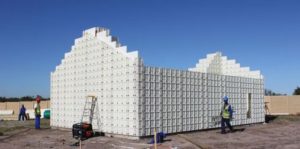 Housing and construction systems developer Moladi says its low-cost housing system, comprising plastic formwork panels and a cement admixture, is widely embraced throughout Africa, as it has been specifically designed to meet the requirements of the African market.
Housing and construction systems developer Moladi says its low-cost housing system, comprising plastic formwork panels and a cement admixture, is widely embraced throughout Africa, as it has been specifically designed to meet the requirements of the African market.
Moladi founder and CEO Hennie Botes says the system alleviates challenges associated with conventional building methods, including excessive costs, labour-intensive processes and the availability of materials. He notes that while the aforementioned challenges are not specific to African countries, they are exacerbated by other uniquely African obstacles.
Read more: http://www.designmind.co.za/conventional-building-methods
Moladi ~ Push To Supply Longer-Term Lodgings
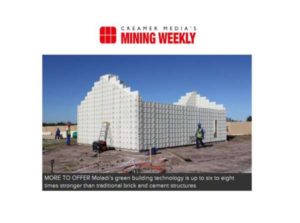 Housing and building construction systems company Moladi believes mining companies, which are currently dealing with the commodities downturn, should invest in longer-term building solutions for the purpose of on-site accommodation, as opposed to more traditional prefabricated modular buildings.
Housing and building construction systems company Moladi believes mining companies, which are currently dealing with the commodities downturn, should invest in longer-term building solutions for the purpose of on-site accommodation, as opposed to more traditional prefabricated modular buildings.
Thus, the company is targeting the mining industry for the provision of long-term accommodation, says moladi founder and CEO Hennie Botes.
The Port Elizabeth-based company’s buildings offer mines investment in permanent structures, which can be used for a range of applications, from accommodation to storage, that are secure, unlike temporary modular solutions.
Further, the company emphasises that its focus on providing a housing solution that is a quicker and a cheaper method of producing better-quality structures that are “far more durable and require less maintenance” will benefit mines and their workers.
Moladi uses mine by-products such as mine slag and crusher dust, which act as a stable level filler, as bulk building material to construct its long-term housing solution, reducing the cost of construction.
He adds that the company can construct buildings that are more durable than prefabricated and traditional brick and mortar building solutions.
Moladi’s green building method involves the use of removable, reusable, recyclable and lightweight plastic formwork moulds that are filled with mortar consisting of sand and cement.
The walls of Moladi’s buildings have a strength of 16 megapascal (MPa), compared with traditional brick walls that start at 2 MPa. “Our walls are up to six to eight times stronger than brick and cement,” adds Botes.
Read more: http://www.designmind.co.za/push-to-supply-longer-term-lodgings
